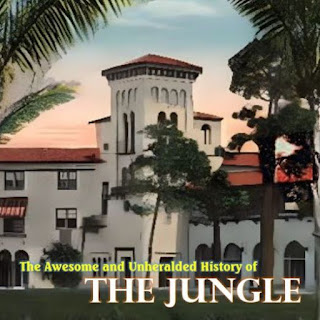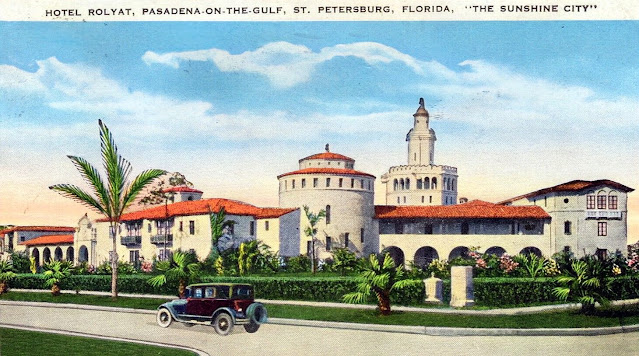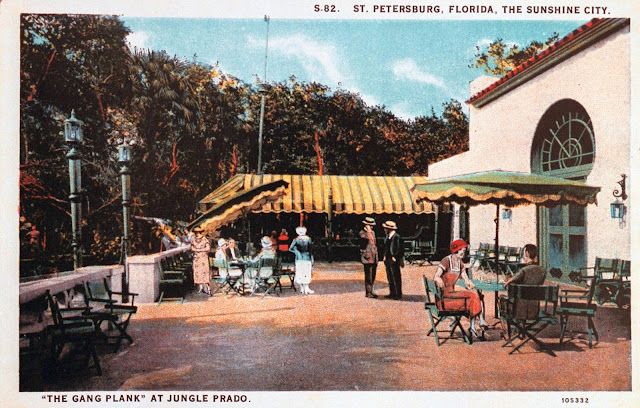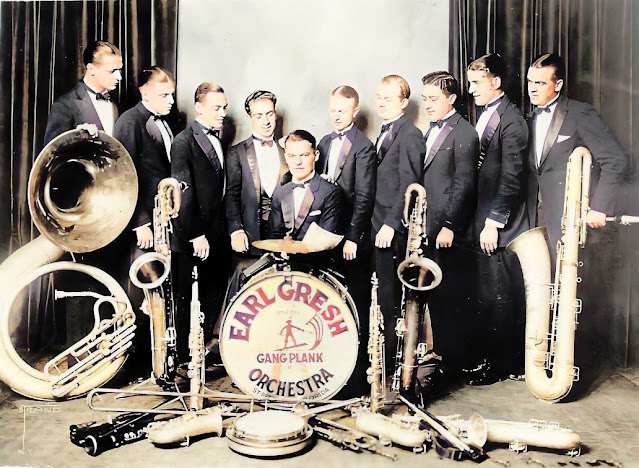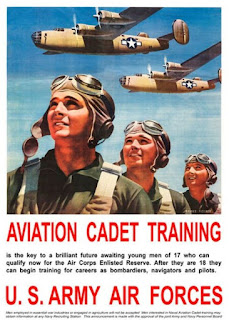This booklet is an overview of the people and events that influenced the development of The Jungle. For more details, visit the Jungle Country Club History blog.
The booklet is available in the following formats:
The current page is formatted for Chrome and other internet browsers.
A flipbook for enhanced viewing on a large screen monitor: click here
A PDF file with larger print: click here
Printed brochure: coming soon!
A flipbook for enhanced viewing on a large screen monitor: click here
A PDF file with larger print: click here
Printed brochure: coming soon!
Introduction
The Jungle is comprised of three West St. Pete neighborhoods: Azalea, Jungle Terrace and Jungle Prada.
When I began exploring its history, I found a sketchy collection of urban legends that centered around a golf course, an airport, a speakeasy, Babe Ruth, Al Capone and Walter Fuller. There were many rumors that turned out to be false. Little attention has been paid to West St. Pete by historians – it seems our past is but a quirky footnote to the downtown St. Pete story. Locals will be surprised to find that the west side has a complex history dating back centuries.
Did Spanish conquistadors make landfall in downtown St. Pete? No, that was at Jungle Prada. Any astronauts or moon walkers go to school downtown, in Kenwood or Old Northeast? No, you're thinking of Admiral Farragut Academy. Famed musician Stephen Stills first played guitar at that same school. Where were St. Petersburg’s first airport and first radio station? The Jungle. Not to mention the many pictures and newsreels that were seen across the country showing Babe Ruth golfing here in The Jungle. In the Roaring Twenties, the Jungle Country Club was a nationally recognized winter resort frequented by the rich and famous.
There are compelling stories and interesting characters in The Jungle and its environs. This book highlights the people and places of The Jungle that contributed to St. Pete's development.
~~~ Steve of the Jungle
email: steveofthejunglecc@gmail.com
For more Jungle history, visit www.junglecountryclubhistoryproject.blogspot.com
The Paleo-Americans
The first humans ‒ the Paleo-Americans ‒ arrived in Florida by way of the Bering Land Bridge about 14,500 years ago. The climate was cool and dry. Due to low sea levels, the Jungle neighborhood was fifty miles from the Gulf of Mexico. Massive herbivores ‒ mastodons, giant armadillos, bison, palaeolamas and giant ground sloths ‒ were roaming Florida, munching on delicious supersized plant life.
Over the course of the next 4000 years, humans adapted and prospered while many of the largest mammals became extinct, victims of climate change and human predators.
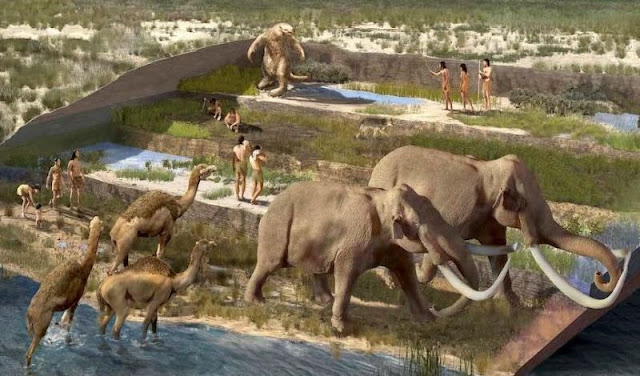
|
| National Park Service illustration of the megafauna that lived alongside humans in North America. |
The Tocobaga (900-1700)
Although much of Florida's past is a mystery, there is archaeological evidence that nomadic hunters roamed Florida and the Pinellas peninsula during the Paleo-American period which began about 14,500 years ago. Like prehistoric man in other parts of the world, these people were hunter-gatherers.
Around 900 AD, the first permanent settlements in the Tampa Bay area were established by the Tocobaga. There is no evidence of agriculture – instead, the Tocobaga lived off the abundant seafood, plants and animals found in the neighborhood.
The Tocobaga village center at the Jungle Prada Site included a plaza, burial mounds and a midden (a mound of discarded sea shells, animal bones and pottery fragments). Numerous artifacts have been found at the site.
First Contact (1528)
The expedition was also a disaster for the Spaniards. More than 300 men came ashore and ventured north in search of gold but nearly all of them, including Narváez, were dead within a year.
It is estimated that three million indigenous people once lived in Florida. As a result of disease and violence, human numbers declined rapidly and, for a time, the interior of the Pinellas peninsula was virtually deserted.
The First Jungle Landowners
Frenchman John Levique and Spaniard Joseph Silva were fishermen and turtle hunters who worked together in the Gulf of Mexico, Boca Ciega Bay, and The Jungle. They sold their catch in Key West and New Orleans.
The U.S government enacted The Florida Armed Occupation Act of 1842 to encourage settlement of the Florida territory. Qualified homesteaders received 160 acres of land in designated areas ‒ including the Jungle. In 1843, Levique and Silva became Jungle homesteaders, laying claim to their prime turtle hunting land.
Local natural landmarks John's Pass and Joe's Creek are named in honor of these pioneers.
Visionaries

|
| F.A. Davis, H. Walter Fuller, Walter P. Fuller |
In the early 1920s, H. Walter began to focus on his real estate holdings in North Carolina, leaving the St. Petersburg enterprises to his son.
Pasadena-on-the-Gulf
In 1922, New York investment banker “Handsome Jack” Taylor bought 2.81 square miles of land south of The Jungle from Walter P. Fuller. Taylor envisioned his new city of Pasadena-on-the-Gulf as an aristocratic resort community with a luxury hotel, beautiful homes, brick-paved streets, wide boulevards, golf courses, a university, miles of horseback paths, ornate subdivision entrances, public schools, a railway station, a chapel, an exotic bird exhibit, a wildlife park, aquatic gardens, tropical plant nurseries and an island full of monkeys.
For Walter P. Fuller, the sale provided capital to fund projects in the Jungle including the Jungle Prado building, the Jungle Hotel and Fuller Flying Field (St. Petersburg's first airport, later renamed Piper-Fuller Field).

|
| Jack Taylor |
Jack Taylor’s name is all but forgotten in local history, yet his monuments are all around us. Pasadena's brick paved streets, dozens of Mediterranean revival homes, the Rolyat Hotel (Stetson University College of Law), the Pasadena golf course, the ruins of the Bear Creek Gateway and many of the historic homes and buildings in the Jungle area owe their existence to Jack Taylor's bold vision.
In 1923, Jack Taylor hired world famous golfer Walter Hagen as president of his new country club. Hagen’s presence added prestige to the Pasadena project. In 1926, the greatest professional golfer, Hagen, faced the top amateur, Jones, on the Pasadena course in what was billed as the Match of the Century.
Taylor’s grand vision was cut short when the land boom ended in 1926 and his Pasadena project went bankrupt.

|
| Jack Taylor, Walter Hagen, Bobby Jones, and Yankee team owner Jacob Ruppert. |
The Roaring Twenties
The Roaring Twenties was a decade of optimism, prosperity and radical change. The Florida land and tourism booms, the Jazz Age, Prohibition, organized crime, speakeasies, women’s rights, the advent of radio and moving pictures, the Golden Age of Sports, the dawn of aviation and the emergence of celebrity culture ‒ all these movements influenced life on the west side of St. Pete.
Walter P. Fuller knew that in order to sell real estate in St. Petersburg's outskirts, he would need to provide convenient access to life's necessities and pleasures, so he built St. Petersburg's first shopping mall. The Jungle Prado (now Prada) retail space included the Gangplank speakeasy (Pinellas county's first nightclub), a drug store, grocery store, photography shop, landscape and nursery store, art and metal shop, bead store, drapery shop, real estate offices, a hardware store, a waiting room for street car passengers and a fully-equipped garage and filling station.
The underworld mingled with the elite at the Gangplank speakeasy. Its terrace overlooked the Jungle Pier and Boca Ciega Bay. Flappers and sheiks danced in the open air to the syncopated jazz sounds of RCA recording artists Earl Gresh and the Gangplank Orchestra. Liquor was prohibited by law, but there was no shortage of bootleg booze which arrived by land (stashed in a nearby house), sea (the Jungle Pier), and air (Piper-Fuller Field).
A Havana landmark, the Prado Promenade, inspired Walter P. Fuller to name the Jungle Prado building. Experts were brought in from Cuba to lay the terrazzo floors. One of the architects for the building was Henry L. Taylor, who combined Spanish architecture with Moorish influences. This would be the first of three major Jungle projects that were completed by the end of 1926. The Jungle Prado opened in December 1924; the Jungle Country Club Hotel began operation in February 1926 and later that year Fuller Flying Field (later renamed Piper-Fuller Field), St. Pete’s first airport, was dedicated on Thanksgiving Day.
Babe Ruth and the Jungle Country Club
The Yankees trained in St. Petersburg during Babe Ruth's 1925-34 seasons and in 1935 Ruth trained in St. Pete as a member of the Boston Braves.

|
| At the Jungle Country Club: Babe and wife Claire on the first tee; Ruth, Al Lang and Miller Huggins. |
There are many references in newspapers, magazines, books, and digital media to Babe Ruth's love of golf. To get in shape, he played two rounds of golf a day on the Jungle course ‒ rain or shine ‒ for weeks before spring training began. He was also known to play the Jungle course after a day of baseball practice. Conservatively, that sounds like a minimum of twenty rounds of golf in a single season and well over 100 rounds during his lifetime. Although he played on many golf courses, including those near his home in New York, the Jungle course was undoubtedly one of his favorites.
Babe Ruth was the most popular golfer of the Roaring Twenties. Images of his annual spring pilgrimage brought fame to the Jungle Country Club.
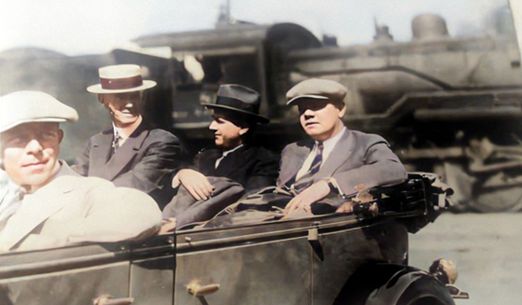
|
| 1925: Babe Ruth, wearing a golf hat, makes his first appearance in St. Pete. Al Lang, president of the Jungle Country Club, is second from the left. |
Timeline of Events That Shaped the Jungle's Development
Best viewed with Google Chrome or Microsoft Edge browser
World War II
Pearl Harbor was attacked on December 7, 1941. Four days later, the United States was officially at war with both Japan and Germany. The Army Air Forces opened a Basic Training Center in St. Petersburg in July 1942. Seventy area hotels were leased by the War Department to house thousands of trainees. In February 1943, at the peak of the Army's occupation, the city's hotels were full. There was an urgent need for additional training facilities, so a decision was made to erect a tent city on the Jungle golf course to handle 10,000 recruits. This location had several advantages ‒ military personnel were already living at the Jungle Hotel, the golf course had recently closed and the expansive property was available, the VA Hospital at Bay Pines was only four miles away and there was trolley service to downtown. Passenger train service to St. Petersburg passed through the Jungle ‒ incoming recruits could disembark a few blocks from the camp. In addition, a serviceable airport with grass runways ‒ Piper-Fuller Airfield ‒ was located adjacent to the golf course.
Trainloads of recruits arrived in St. Petersburg and reported for basic training at Tent City. A post office was established and local newspapers listed their servicemen as stationed at Tent City, Jungles, Fla.
A total of 119,057 military personnel passed through the St. Petersburg Basic Training Center.
Azaleaville
In 1944 Admiral Farragut Academy purchased the Jungle Hotel and golf course. Following World War II, Florida experienced another real estate boom triggered by an improved economy, retirees moving south, new interstate highways and – perhaps most importantly – the advent of home air conditioning. The golf course was sold to the Azalea Homes company. Between 1954 and 1957 a thousand homes were built on the course. The neighborhood was called Azaleaville.
Jungle Trivia
• In the 1920s and 30s, many of the Jungle Country Club’s horse-riding paths went through Azalea Park
• Walter Hagen holds the record low score on the Jungle golf course – 64
• Admiral Farragut Academy is in the Azalea Neighborhood
• Famed architect Addison Mizner built Casa Coe da Sol across from the Jungle Hotel in 1931
• Henry Taylor, architect for the Vinoy Hotel, was an architect for the Jungle Prado and the Jungle Hotel
• Two of the twelve men who have walked on the moon are graduates of Admiral Farragut Academy
• A moon rock is on display at Admiral Farragut Academy, one of only two moon rock displays in FL
• Chicago Outfit gangsters were guests at the Jungle Hotel in 1926, making plans for an offshore casino
• The Orange Blossom Special train traveled along the Pinellas Trail on the eastern edge of the Jungle
• It is rumored that Al Capone financed the Monte Carlo casino ship that operated near the Jungle Pier
• The pool house scene in the movie Cocoon was filmed at Casa de Muchas Flores on Park Street
• Famed musician Stephen Stills learned to play guitar while a student at Admiral Farragut Academy
• Many homes built in Azaleaville in the 1950s have mid-century modern architectural elements
• Babe Ruth described the day he scored an eagle on the Jungle course as one of his greatest thrills
• In the late 1920s wild monkeys lived in The Jungle, escapees from Monkey Island in Pasadena
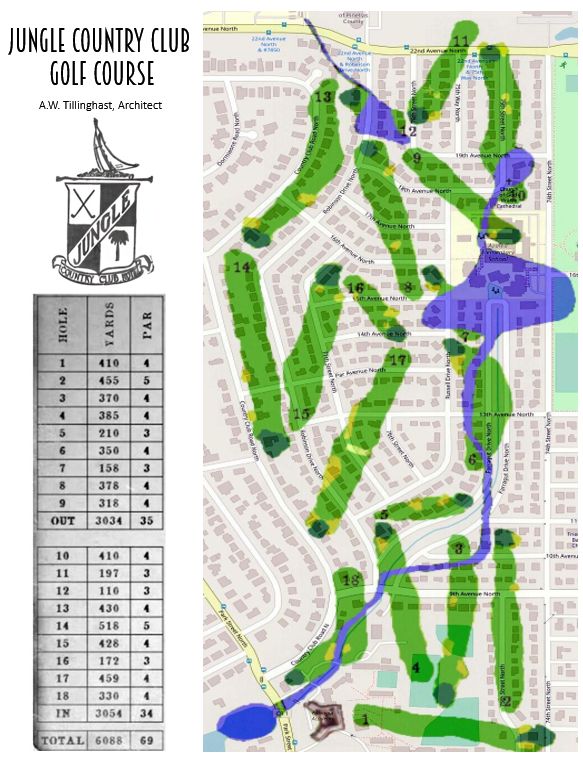

Front cover: Admiral Farragut Academy (formerly the Jungle Country Club Hotel).
Back cover: Tocobaga hunter; sign at the Jungle Prada site; 1916 Jungle clubhouse; ibis; golf course developer A.W. Tillinghast; great white egret; Admiral Farragut Academy entrance; horseback riding at the Jungle Country Club; Al Capone and henchmen from the Chicago Outfit; Jungle Hotel barber Fred Gehring with customer Babe Ruth; Jungle golfers Kenesaw Mountain Landis, Gene Sarazen and Walter Hagen; the Dixie Well – Jungle fountain of youth; roseate spoonbill; Babe Ruth on the Jungle golf course; Stephen Stills; the Orange Blossom Special; 1941 Baseball Players Golf Tournament; man on the moon. The wading birds were photographed in Jungle Country Club Creek.

